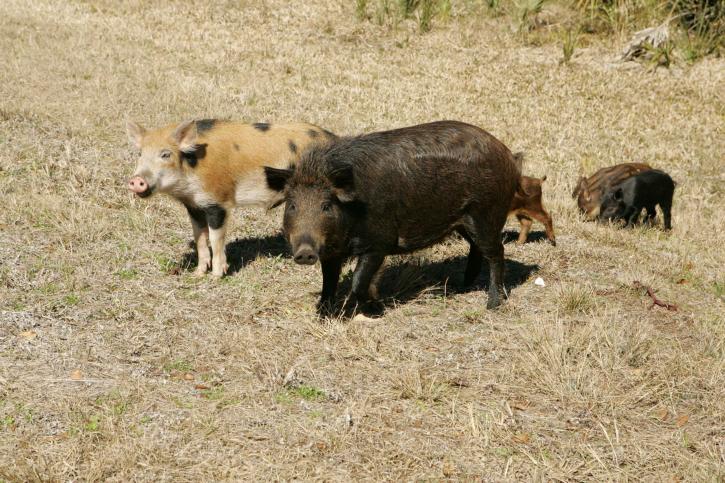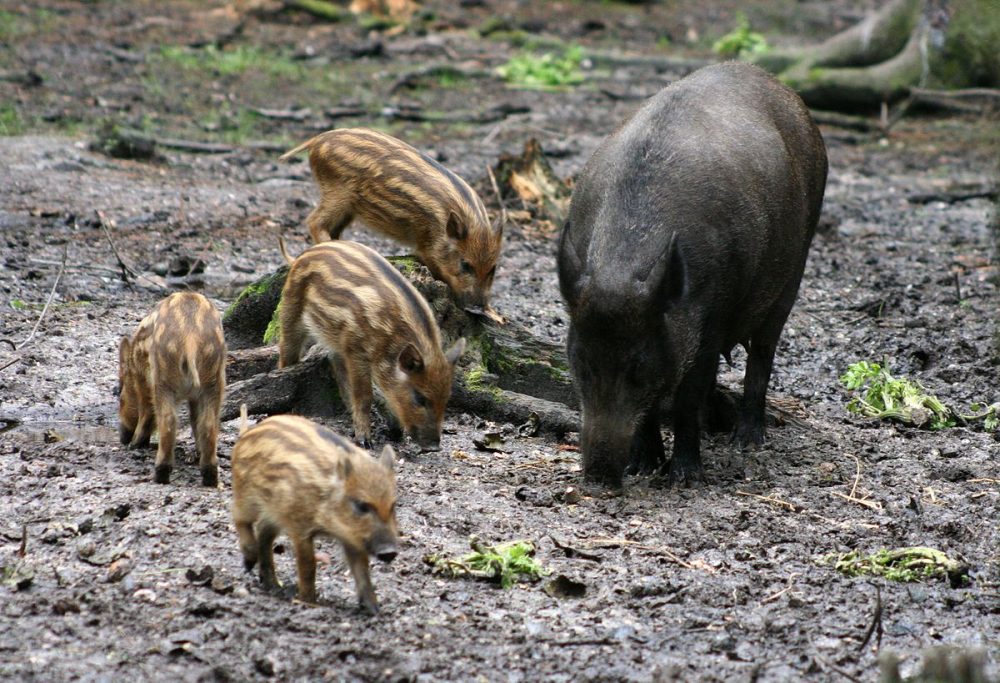By Savannah Owens
What is going on with all these wild hogs? KSST set out to find out the best ways to manage the hog problem.
We spoke with Extension Agent Mario Villarino, TAMUC’s Dr. Johanna Delado-Acevedo, and Wild Boar Outfitters Owner, Marcus Keith to get to the root of this major problem.
Don’t be confused by the names! Wild hogs, Wild pigs, Feral pigs, etc. all are the same animal. However: wild hogs are not Javelinas. “Wild pigs are a non-native species, introduced by Spaniards as domestic pigs and later escaped. Javelinas are native to the new world, and the White-Collar Javelina is the native species found in Texas.” says Dr. Delado-Acevedo.
Wild hogs travel in groups called “Sounders-made up of 2-3 sows and their young.” Villarino explained that these tribes often contain “20-30 pigs at one time.” These groups can do major damage in just one night.
Marcus Keith used an analogy to explain the massive problem. “If Texas has [about] One million hogs, and if we kill nine out of ten hogs the next year well still have Two million.” Hogs can have ten to twelve piglets in a litter and can have two to three litters a year. Keith clarified “The only way to catch them all is to trap them.”
Wild pigs have many different colors: black, white, spotted. They are “smaller than commercial pigs because they exercise.” Villarino mentioned. They are also omnivores and eat a variety of types of food from corn crops and berries to snakes, and even sometimes each other.
Dr. Delgado-Acevedo explained the main causes for destruction is that the “wild pigs compete for resources with native wildlife and predate domestic livestock and ungulate game species. In addition, wild pigs are a significant threat to agriculture (grain, peanut, soybean, cotton, and vegetable crops) and soils due to rooting and trampling.” Rooting is the process wild hogs use to break up the soil and dig under crops or grasses. “Wild pigs also transmit diseases that affect humans and livestock such as pseudorabies, brucellosis, bovine tuberculosis, and foot and mouth disease.”
All three of the experts agreed that if you see any signs of hogs on your property you need to take action immediately. There are two main types of ways to get rid of wild hogs: Trapping and Hunting. Other methods like poison are risky as it could affect other wildlife or domestic animals.
Trapping-If you are going to trap hogs you want to trap the whole sounder. If you only have a small trap you won’t be catching enough of the hogs. The rest of the group will continue to destroy your land. Keith described the best type of trap which would ideally be a permanent trap about 25ft wide, with a “T-Post every 4ft” to strengthen it. He encourages trappers to put a top on it, or make it around 7ft tall, because wild hogs can “jump as high as deer”. If you decide to trap the wild hogs, make sure to provide shade or some form of protection from the heat because the hogs cannot sweat, and will overheat and die if left out in the sun.
Hunting-The cons to this method are similar to a smaller trap. It doesn’t kill a majority of the hogs. Villarino mentioned that hunting them may scare them off for awhile but within a few years they’ll be back. However, in Texas, there are no regulations for hunting wild pigs on your property. If it is on your property you don’t need a hunting license, if it is not your property you will need a small game license. “You can hunt them Twenty-Four hours a day, seven days a week.” Keith said, before offering additional advice to those with hog problems. They are usually best hunted at night around 2:00am. “If you are using a spot light let the authorities know [beforehand.” Keith has also found night vision scopes to work well.
Dr. Delgado-Acevedo noted that landowners should use “use a combination
on [hogs] and in a large area of land, possible establishing cooperatives of landowners [because] only one method is not enough.”
If you decide to try and trap the wild hogs on your property you may sell them to restaurants or production facilities. Often times restaurants will only purchase live hogs, and they will need to be taken to an “Approved Feral Swine Facility” There are three in the surrounding area: Cumby, Rains, and Winnsboro.
Villarino emphasized that there were two sides to the issues of managing the wild hog population. One side views the hogs as a pest, and wants them eradicated. The other views these hogs as a resource, and wants to keep them alive to be able to hunt and eat them. “The surprising thing is nobody should go hungry in Texas-there’s enough hogs to feed everyone.” Marcus Keith added.
All three of the experts agreed that wild hog meat was quite good and available for human consumption. Keith cautioned hunters and chefs to make sure they cook the meat fully, he also encouraged people to “be aware of the hogs in the area. They’re not as dangerous as they seem, unless you hunt them with dogs. [However, you should still remain cautious, and if you’re] driving at night have your bright lights on, and don’t speed because [if you hit a hog] it will mess up your car”.
If you see or find hogs on your property your best option is to use multiple methods to get rid of them. Trap and hunt them. Because Wild Hogs are nomadic, you want to ensure they don’t come back.







